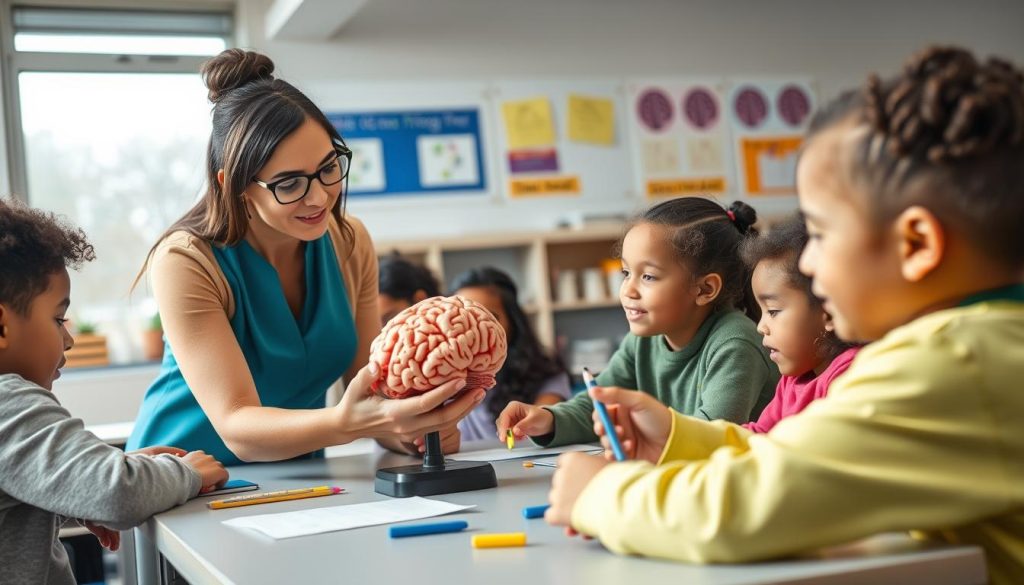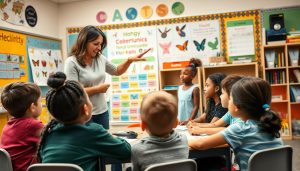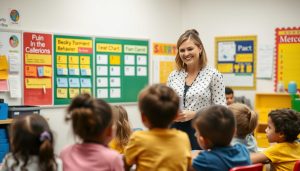Why Brain Research Matters for Today’s Educators
The education landscape is evolving rapidly, and modern teaching approaches increasingly rely on scientific understanding of how learning occurs at the neurological level. Brain research provides crucial insights that can transform ordinary lessons into powerful learning experiences. When teachers understand the neurological basis of learning, retention, and cognitive development, they can design instruction that aligns with these natural processes.
For K-12 educators, developing teacher skills that incorporate neuroscience findings isn’t just about staying current—it’s about maximizing student potential. Studies show that brain-based teaching strategies can improve information retention by up to 40% compared to traditional methods. This scientific approach helps teachers address diverse learning needs while creating more engaging classroom experiences.
The practical applications of brain research in education extend beyond theoretical concepts. They provide actionable strategies that teachers can implement immediately to enhance student engagement, improve memory formation, and develop stronger critical thinking skills. Let’s explore seven evidence-based approaches that can transform your teaching practice.
Brain Research Strategy #1: Movement Integration
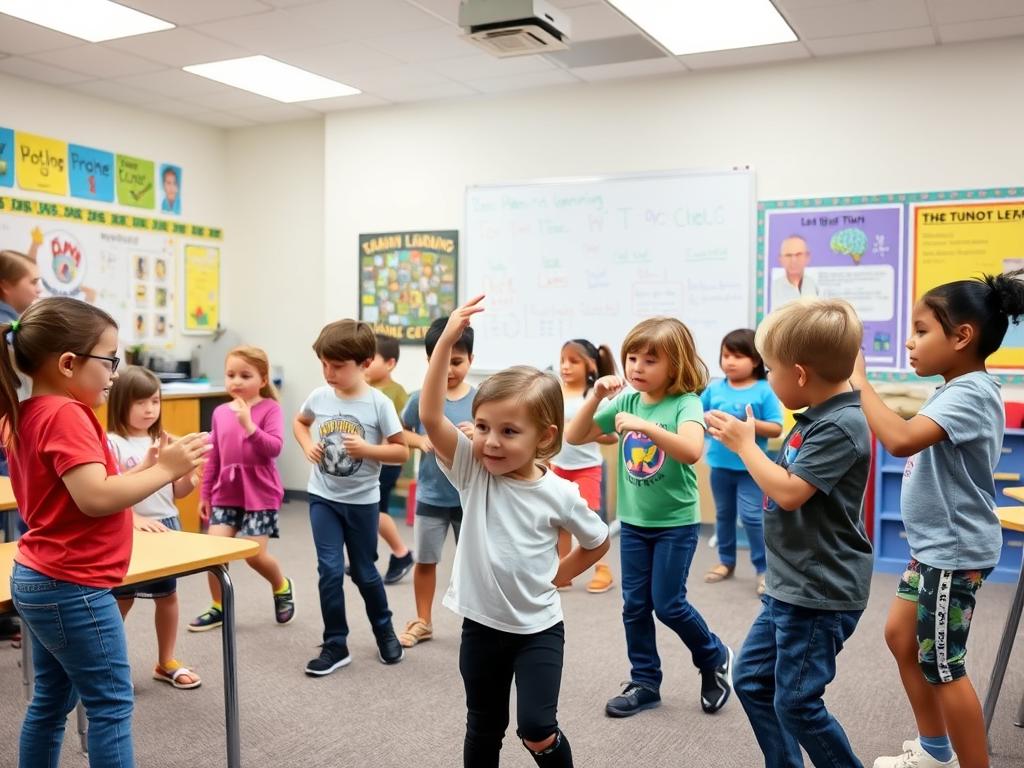
Physical movement isn’t just good for the body—it’s essential for optimal brain function. Research from the Frontiers in Psychology journal demonstrates that movement increases blood flow to the brain, delivering more oxygen and nutrients while triggering the release of brain-derived neurotrophic factor (BDNF)—a protein that supports neuron health and facilitates learning.
Classroom Applications:
- Implement brief “brain breaks” involving physical movement every 20-25 minutes
- Create learning stations that require students to move around the classroom
- Teach concepts through kinesthetic activities where students physically represent ideas
- Use hand signals or whole-body responses to check for understanding
Developing teacher skills in movement integration doesn’t require specialized training. Simple strategies like having students stand to discuss topics, incorporating gesture-based learning, or using “walk and talk” activities can significantly enhance cognitive processing. These approaches are particularly effective for students who struggle with traditional sedentary learning environments.
Enhance Your Movement-Based Teaching Skills
Discover practical ways to incorporate movement into your daily lessons while maintaining classroom management.
Brain Research Strategy #2: Emotional Connection

The brain’s emotional and cognitive systems are deeply interconnected. When students form emotional connections to learning material, their brains release dopamine and other neurochemicals that enhance memory formation and recall. Brain research consistently shows that emotional engagement activates the amygdala and hippocampus—regions critical for converting short-term memories into long-term knowledge.
Classroom Applications:
- Begin lessons with emotionally engaging hooks or personal stories
- Connect abstract concepts to real-world situations students care about
- Use humor, surprise, and positive emotional experiences to enhance retention
- Create safe emotional environments where students feel comfortable taking intellectual risks
Developing teacher skills in emotional connection requires authentic engagement with students and content. When teachers demonstrate genuine enthusiasm for subject matter, students’ mirror neurons activate, making them more likely to share that enthusiasm. This neurological mirroring creates powerful learning opportunities that transcend traditional instruction.
“When emotions are properly engaged, the brain’s attention systems are activated, and learning becomes more efficient and effective.”
– Dr. Mary Helen Immordino-Yang, Neuroscientist and Education Researcher
Brain Research Strategy #3: Spaced Repetition
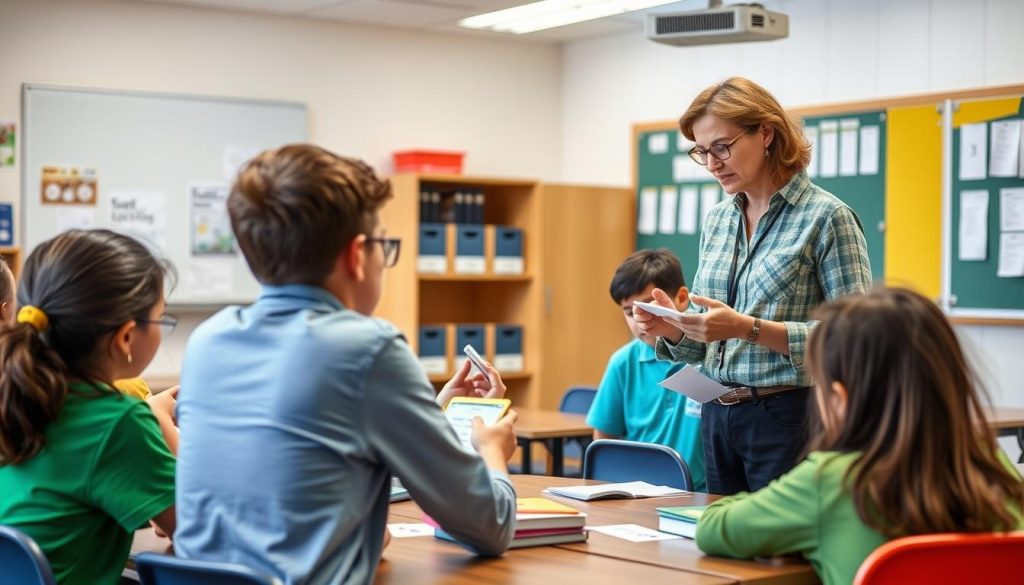
The brain doesn’t store information effectively through single exposures. Neuroscience research on memory formation reveals that spaced repetition—revisiting material at strategic intervals—significantly enhances long-term retention. This approach works with the brain’s natural forgetting curve to strengthen neural pathways before memories fade completely.
Classroom Applications:
- Review key concepts at the beginning and end of each lesson
- Implement systematic review sessions at increasing intervals (1 day, 3 days, 1 week, 2 weeks)
- Use digital tools that incorporate spaced repetition algorithms
- Create cumulative review activities that revisit previous learning in new contexts
Effective teacher skills in spaced repetition involve strategic planning rather than simple repetition. By varying the context and application of concepts during review, teachers can help students form stronger, more flexible neural connections. This approach is particularly valuable for vocabulary acquisition, mathematical procedures, and foundational concepts that support higher-order thinking.
Brain Research Insight: Studies show that spaced repetition can improve long-term retention by 200-700% compared to cramming or single-exposure learning.
Brain Research Strategy #4: Multisensory Instruction
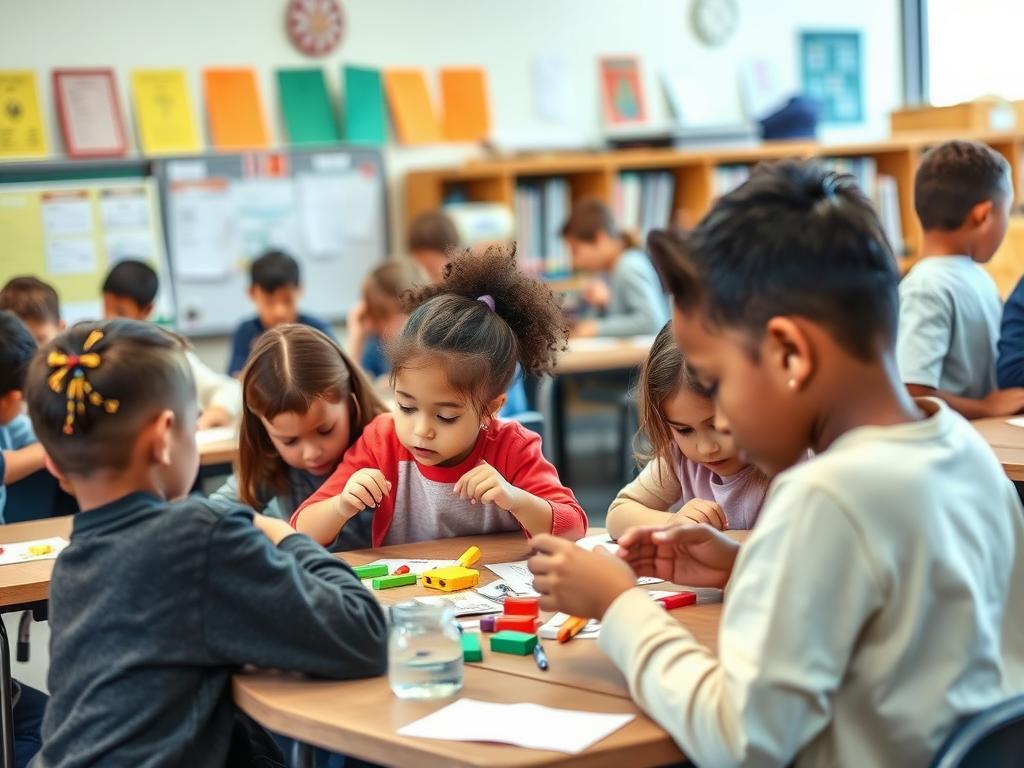
The brain processes information through multiple sensory pathways simultaneously. When instruction engages multiple senses, it creates redundant neural pathways to the same information, significantly increasing the likelihood of retention and recall. Brain research demonstrates that multisensory learning activates more neural networks than single-sensory approaches.
Classroom Applications:
- Combine visual aids with verbal explanations and hands-on activities
- Use manipulatives, models, and physical objects to represent abstract concepts
- Incorporate music, rhythm, and movement to enhance memory formation
- Create learning experiences that engage visual, auditory, kinesthetic, and tactile pathways
Developing teacher skills in multisensory instruction requires thoughtful lesson design that intentionally incorporates diverse sensory experiences. This approach is particularly beneficial for students with learning differences, as it provides multiple access points to information. Even simple adjustments—like adding gestures to vocabulary instruction or incorporating tactile elements into math lessons—can significantly enhance learning outcomes.
Teachers who master multisensory instruction report higher student engagement and improved performance across diverse learning profiles. By creating lessons that appeal to different sensory preferences, educators can reach more students effectively while reinforcing learning through complementary neural pathways.
Brain Research Strategy #5: Retrieval Practice
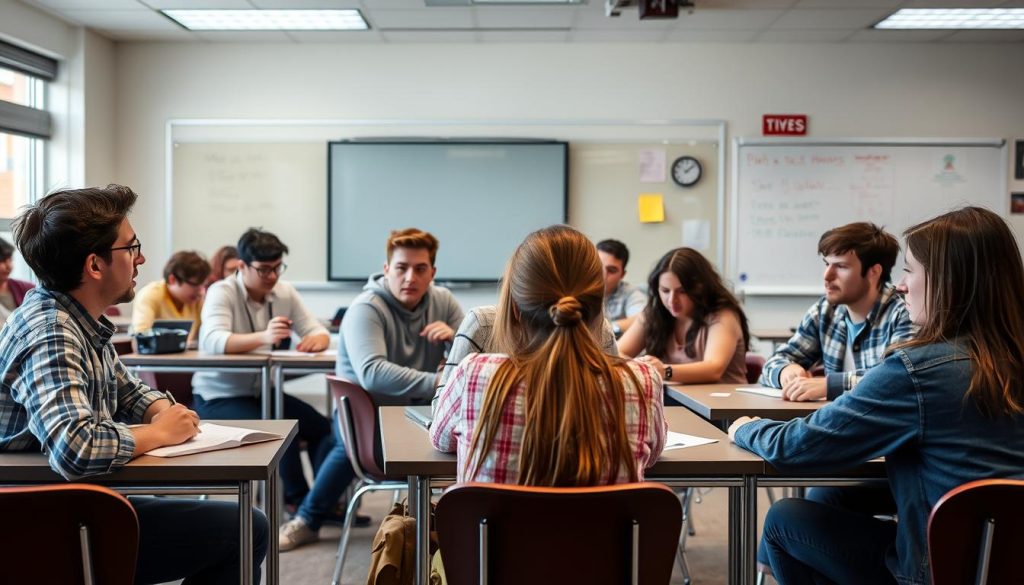
Passive review is far less effective than active retrieval for creating durable memories. Neuroscience research shows that the act of recalling information strengthens neural pathways and creates stronger memory traces than re-reading or reviewing. This process, known as the “testing effect,” makes information more accessible for future use.
Classroom Applications:
- Implement low-stakes quizzing and self-testing opportunities
- Use “brain dumps” where students write everything they remember about a topic
- Incorporate think-pair-share activities that require information recall
- Create retrieval-based games and activities that make recall engaging
Effective teacher skills in retrieval practice focus on creating opportunities for students to actively recall information rather than simply recognize it. By designing activities that require students to generate answers from memory—rather than selecting from options or reviewing notes—teachers can significantly enhance long-term retention and transfer of learning.
Master Retrieval Practice Techniques
Learn how to implement effective retrieval practice strategies in your classroom with our comprehensive guide.
Brain Research Strategy #6: Chunking and Organization
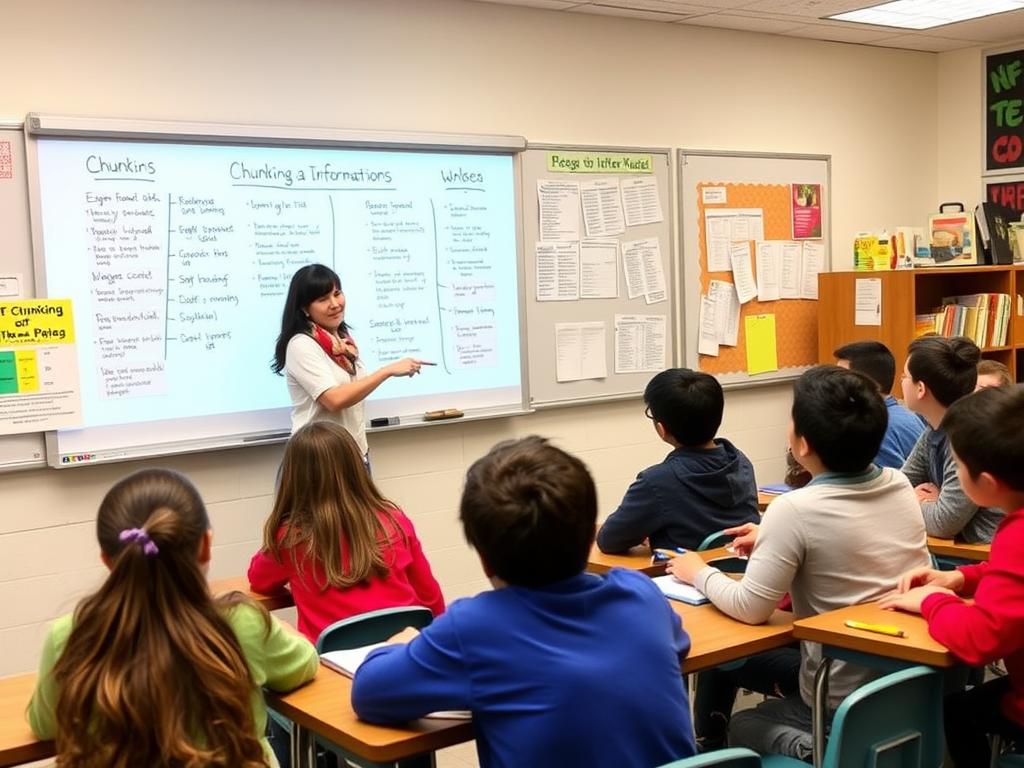
The brain has limited working memory capacity—typically 4-7 items for adults and fewer for children. Brain research shows that organizing information into meaningful chunks helps overcome these limitations by treating related items as single units. This chunking process allows the brain to process more information efficiently while forming stronger conceptual connections.
Classroom Applications:
- Teach students to create concept maps that organize information visually
- Present information in logical groups rather than isolated facts
- Use mnemonic devices to chunk information into memorable units
- Help students identify patterns and relationships between concepts
Developing teacher skills in chunking and organization involves both presenting information in structured ways and teaching students to organize information independently. When teachers model effective organization strategies, students develop metacognitive skills that transfer across subjects and grade levels.
“The brain naturally seeks patterns and connections. When we teach students to organize information effectively, we’re working with their brain’s natural tendencies rather than against them.”
– Dr. Daniel Willingham, Cognitive Scientist
Brain Research Strategy #7: Feedback and Metacognition

The brain continuously adjusts its understanding based on feedback. Neuroscience research demonstrates that timely, specific feedback creates opportunities for neural rewiring and strengthens accurate connections while weakening misconceptions. When combined with metacognitive reflection, feedback becomes even more powerful for learning.
Classroom Applications:
- Provide immediate, specific feedback focused on process rather than person
- Teach students to monitor their own understanding through metacognitive prompts
- Create opportunities for peer feedback with structured protocols
- Use formative assessment to provide feedback before summative evaluation
Essential teacher skills in feedback and metacognition involve creating a classroom culture where reflection is valued and mistakes are viewed as learning opportunities. When teachers model metacognitive thinking and provide growth-oriented feedback, students develop greater agency in their learning process and become more resilient when facing challenges.
Metacognitive Prompt Examples:
- “What strategy did you use to solve this problem?”
- “How did you know this approach would work?”
- “What might you do differently next time?”
- “Where else could you apply this strategy?”
Implementing Brain-Based Strategies in Your Classroom
Incorporating brain research into your teaching practice doesn’t require a complete overhaul of your approach. Start by selecting one strategy that aligns with your current teaching style and gradually integrate others as you become comfortable. The most effective implementation occurs when teachers understand both the “why” behind these strategies and the practical “how” of classroom application.
Steps for Successful Implementation:
- Assess your current teaching practices against brain-based principles
- Select one strategy to implement consistently for 3-4 weeks
- Collect informal data on student engagement and learning outcomes
- Reflect on results and adjust your approach accordingly
- Gradually incorporate additional strategies as your teacher skills develop
Remember that developing teacher skills in brain-based instruction is an ongoing process. Even small adjustments to your teaching approach can yield significant improvements in student learning outcomes. The key is consistency and intentionality in applying these research-backed strategies.
Transform Your Teaching with Brain Research
Get step-by-step guidance on implementing all seven brain-based strategies in your classroom with our comprehensive professional development course.
Conclusion: The Future of Brain-Based Education
The integration of brain research into educational practice represents one of the most promising developments in modern pedagogy. As our understanding of neuroscience continues to evolve, so too will our approaches to teaching and learning. For today’s K-12 educators, developing teacher skills grounded in neuroscience isn’t just beneficial—it’s essential for preparing students for an increasingly complex world.
By implementing these seven brain-based strategies, you can create learning environments that work with students’ natural cognitive processes rather than against them. The result is not only improved academic outcomes but also more engaged, motivated learners who understand how to use their brains effectively.
Remember that enhancing your teacher skills through brain research is a journey rather than a destination. Each small step you take toward more brain-friendly instruction benefits both you and your students. As you continue to explore the fascinating intersection of neuroscience and education, you’ll discover even more ways to transform your teaching practice.
Continue Your Brain-Based Teaching Journey
Join our community of educators implementing neuroscience in their classrooms and access exclusive resources to enhance your teacher skills.
Frequently Asked Questions About Brain Research in Education
How much neuroscience background do I need to implement these strategies?
You don’t need an extensive background in neuroscience to implement these strategies effectively. The approaches outlined in this article are designed to be accessible for all educators, regardless of their scientific background. Focus on understanding the basic principles and practical applications rather than complex neurological details. As you develop your teacher skills, you can gradually deepen your knowledge of the underlying science.
Will these strategies work for students with learning differences?
Yes, brain-based teaching strategies are particularly beneficial for students with learning differences. The multisensory approach, movement integration, and chunking techniques can help create multiple pathways to learning that accommodate diverse cognitive profiles. Many teachers report that these approaches are especially effective for students who struggle with traditional instruction. Developing teacher skills in brain-based methods can help you reach all learners more effectively.
How can I measure the effectiveness of these strategies?
You can measure effectiveness through both formal and informal assessments. Look for improvements in student engagement, retention of information over time, transfer of learning to new contexts, and performance on assessments. You might also notice changes in classroom atmosphere, student attitudes toward learning, and their ability to self-regulate. Collecting simple before-and-after data when implementing a new strategy can help you evaluate its impact on your specific classroom context.
How do I find time to implement these strategies with curriculum demands?
Many of these strategies can be integrated into existing lessons rather than added as separate activities. For example, incorporating movement or multisensory elements into current lessons, using retrieval practice as warm-ups or closures, or restructuring how you present information to include chunking. Start with small changes that enhance rather than compete with your curriculum requirements. As your teacher skills develop, you’ll find more efficient ways to integrate these approaches into your daily practice.

